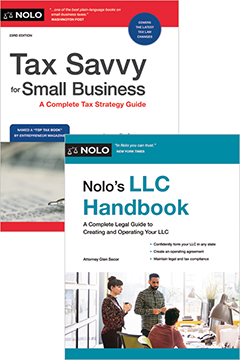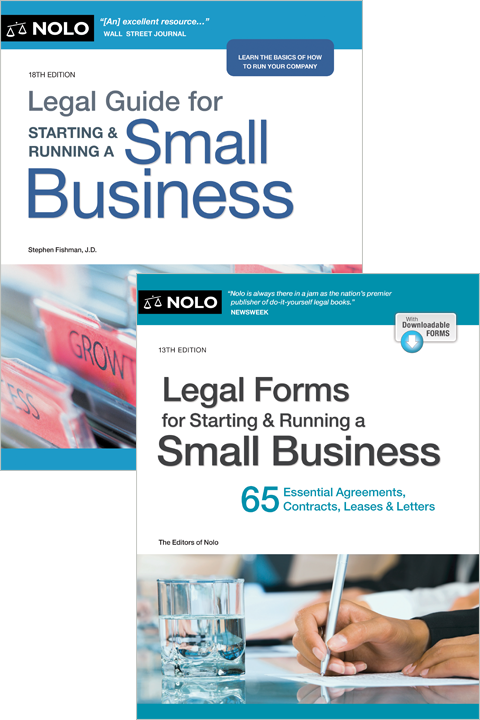If you’re planning on converting your LLC to a corporation in Texas, you’ll need to create a conversion plan, vote on it, and file articles with the Lone Star State.
Businesses can change in various ways. Sometimes your company will take on new leadership, shift its customer base, or even downsize. Other times your business will expand as you attract new investors or your profits grow. While forming a limited liability company (LLC) probably made sense for you in the beginning, circumstances have likely changed, and you might've decided that converting to a corporation is the way forward.
The details of how to convert your Texas LLC to a Texas corporation will vary depending on your specific situation. However, here's some general guidance on the process. (For more general information, read our overview on converting an LLC to a corporation or S corporation.)
- Rules for Converting Your Texas LLC to a Corporation
- Preparing a Plan of Conversion to Turn Your LLC Into a Texas Corporation
- LLC Members Vote on the Plan of Conversion
- File Conversion Paperwork with the Texas Secretary of State
- How Assets and Liabilities Are Transferred After Conversion
- What to Do After You File Your Conversion Paperwork
- Additional Guidance About Converting Your Texas LLC to a Texas Corporation
Rules for Converting Your Texas LLC to a Corporation
In Texas, you can convert your LLC to a corporation in two different ways:
- statutory conversion, or
- statutory merger.
With a merger, you'll need to create a new corporation before your LLC's assets and liabilities can be transferred over to the corporation. With a conversion, your new corporation is formed automatically through the conversion process and the LLC's assets and liabilities are immediately transferred over.
Both methods will convert your LLC to a corporation. But the statutory conversion method is much simpler so you should choose this process over the merger method.
Texas Statutory Conversion
To convert your Texas LLC to a Texas corporation by statutory conversion, you need to:
- prepare a plan of conversion that includes, or has attached to it, a certificate of formation (which is what most other states call articles of incorporation) for the new corporation
- get the LLC members to approve the plan of conversion, and
- file certificate of conversion and certificate of formation with the Texas Secretary of State (SOS).
Key elements of the conversion procedure are laid out in the following sections of Texas law: Tex. Bus. Org. Code §§ 10.101-10.109 (2023).
LLC Operating Agreement
In addition to Texas's laws on LLC conversions, you'll need to abide by your LLC's operating agreement, if your company has one. Your agreement can set forth rules and procedures for converting your LLC to a different entity. But if you don't have an agreement or your agreement is silent on the conversion process, you must follow Texas's default conversion rules.
Preparing a Plan of Conversion to Turn Your LLC Into a Texas Corporation
To convert your LLC, you'll need to create a plan of conversion. Your plan must include at least the following information:
- the name of your LLC
- the name of your new corporation
- a statement that your LLC is continuing its existence in the form of a corporation
- a statement that your new corporation will be a Texas corporation
- how the LLC membership interests will be converted into shares of corporate stock, and
- a certificate of formation for the new corporation.
(Tex. Bus. Org. Code § 10.103 (2023).)
Your plan can include further rules and procedures for the conversion. But you're not required to include these extra details in your plan. (Tex. Bus. Org. Code § 10.104 (2023).)
LLC Members Vote on the Plan of Conversion
The LLC members will need to vote to approve the conversion and the plan of conversion. In Texas, a majority of the LLC members need to vote to approve the LLC conversion and plan. (Tex. Bus. Org. Code § 101.356 (2023).)
You must give the members advance notice of the special meeting to vote on the conversion. (Tex. Bus. Org. Code § 101.352 (2023).)
File Conversion Paperwork with the Texas Secretary of State
Once your conversion has been approved by the LLC members, you'll need to file a certificate of conversion, including a certificate of formation, with the SOS. Texas provides a single document containing detailed instructions and the certificate of conversion you can complete and mail to the state.
As of 2023, the typical total filing fee for mail-in submissions is $600. This includes a $300 fee for the certificate of conversion and a $300 fee for the certificate of formation. As of 2023, Texas doesn't allow online filings for entity conversions or mergers.
Texas Certificate of Conversion
The certificate of conversion provides basic information about your LLC and proposed new corporation, such as:
- the name, organizational form (LLC), and jurisdiction of formation (Texas) of the converting entity
- the name, organizational form (corporation), and jurisdiction of formation (Texas) of the converted entity
- either an attached copy of the plan of conversion or else a statement that the plan of conversion is on file at your LLC's main business address and will continue to be available at your new corporation's main business address after the conversion is completed; and
- a statement that your plan of conversion was approved as required by the laws of Texas and your operating agreement.
(Tex. Bus. Org. Code § 10.154 (2023).)
If you attach a plan of conversion to your certificate of conversion, then a certificate of formation for your new corporation should be included as part of the plan of conversion. Otherwise, you'll also need to file a certificate of formation (see below).
As of 2023, the conversion form currently provided by the SOS includes places to enter other items of information. For instance, the form asks you to provide a SOS file number for your LLC, if there is one. The form also asks you to provide a certificate from the comptroller of public accounts that show that all LLC taxes have been paid, or instead of a tax certificate, a statement that the new corporation will pay the due taxes.
The SOS form requires the signature of a person authorized to sign on behalf of your LLC.
Texas Certificate of Formation
As mentioned above, when using the SOS's conversion form, if you choose to attach a plan of conversion, then the plan should include a certificate of formation for your new corporation. If, on the other hand, you don't attach a plan, then you must complete and attach a certificate of formation. The certificate of formation can be relatively simple. At a minimum, it should include:
- a statement that the new corporation is formed under a plan of conversion
- the name, address, date of formation, prior form of organization (LLC), and jurisdiction of formation (Texas) of your LLC
- a statement that the new entity is a corporation
- the name of your new corporation
- the mailing address of your new corporation
- the purpose for which the corporation was formed
- duration of the new corporation (which can be perpetual); and
- street address of your corporation's registered office and the name of your corporation's registered agent at that address.
(Tex. Bus. Org. Code § 3.005 (2023).)
Texas provides a certificate of formation form containing detailed instructions you can complete and include with your certificate of conversion.
While the certificate of conversion, including a plan of conversion and certificate of formation, might appear straightforward, converting your particular business could involve unexpected complications. For that reason, it's a good idea to seek the assistance of an attorney.
How Assets and Liabilities Are Transferred After Conversion
When you convert your LLC to a corporation, generally everything associated with your LLC will transfer to the new corporation as if the conversion didn't occur.
The following that once existed under the LLC generally will now continue under the corporation:
- all of the property belonging to the LLC
- all debts, liabilities, and other obligations of the LLC
- all rights of creditors regarding, and liens on, any LLC property
- all pending legal actions or proceedings against the LLC
- all obligations of the LLC for which an LLC member was personally liable, and
- all obligations of the LLC itself.
For example, if there's a judgment against your LLC, then that same judgment will apply to your corporation. Or, if your LLC owns a piece of land, your new corporation generally will now own that property.
What to Do After You File Your Conversion Paperwork
Apart from the above steps, you'll also need to take care of all the tasks normally associated with creating and maintaining a new corporation, such as:
- drafting corporate bylaws
- electing corporate officers and appointing corporate directors
- holding an initial board meeting
- creating a shareholders' agreement
- issuing stock certificates
- using the official corporation name on your business documents, and
- filing the required annual report with the state.
It's important that you follow all of these formalities to ensure that your business continues to have limited liability and can take advantage of various corporate tax benefits.
One other important step in the conversion process is to make sure that no business contracts—such as loan agreements, commercial lease agreements, and licenses and permits—will be affected by your business's entity change.
Additional Guidance About Converting Your Texas LLC to a Texas Corporation
Before you start converting your LLC to a corporation, make sure you understand the differences between the business structures and the effects of such a conversion. It's important that you complete each step of the process correctly for your conversion to be processed and recognized.
Moreover, Texas has distinct legal requirements for corporations that you must comply with. If you need legal assistance with converting your LLC or complying with the state corporation laws, you should talk to a Texas business attorney.
For a more complete discussion of the steps involved in running a business, check out Nolo's Start & Run a Business Bundle.
- Rules for Converting Your Texas LLC to a Corporation
- Preparing a Plan of Conversion to Turn Your LLC Into a Texas Corporation
- LLC Members Vote on the Plan of Conversion
- File Conversion Paperwork with the Texas Secretary of State
- How Assets and Liabilities Are Transferred After Conversion
- What to Do After You File Your Conversion Paperwork
- Additional Guidance About Converting Your Texas LLC to a Texas Corporation



